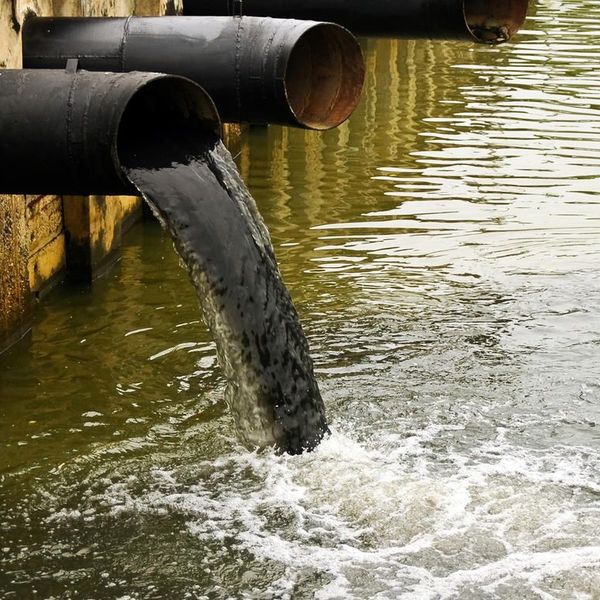Malaysia Environmental Quality Report
Water pollution also occurs when unwanted materials flow into the water bodies without having sufficient treatment to remove the harmful compounds. According to a Malaysia Environmental Quality Report (2015) issued by the National Resources and Environment Ministry, 7% or 33 rivers from the total 477 rivers nationwide were categorized as polluted. This is detrimental and harmful to all the living species around the world, as we consume water every day to keep us hydrated. Water pollution may affect and disrupt the entire food chain, as well as human infections of various diseases, and finally, affect the crop production and pollutes the food.
One of the most significant effects associated with water pollution is that it will lead to the death of aquatic creatures, disrupt the entire food chain, and causing serious problems in humans and wildlife. (Renewable Resources Co, 2016). Due to the increase of toxicity in the water, it influences the food chain greatly, and finally, aquatic creatures become extinct. This is due to the reason of water that polluted by industrial waste and oil spills may contain a lot of heavy metals. A heavy metal such as iron, lead and cadmium, nitrates and phosphates will contaminate the microorganisms in the water. It will also affect the respiratory system of the aquatic creatures. Iron may clog the breathing path of the aquatic creatures and finally, lead to the fatal of the aquatic life. For example, iron may clog the fish’ gills and finally causing them to die, due to unable to breathe. However, aquatic creatures were eaten by larger species, such as plankton, which in turn are eaten by larger animals, and finally to the turn of humans. It may cause major health problems on humans and wildlife, as people all around the world consume fish and seafood. This is mainly because metal contamination of water can lead to hair loss, liver cirrhosis, kidney failure, and neurological disorders. Therefore, water pollution may lead to the imbalance and destruction of the whole ecosystem in the world.
Water-Borne Diseases
Perhaps the most serious water pollution damage is related to human, which affecting humans by acquiring various diseases, such as hepatitis and cholera. (The Berkey, 2019). Population Resource Center (2004) found that 2.2 million infants and children die each year from diarrhoea and cholera, caused largely by contaminated water and food. Diseases such as hepatitis are usually caused by eating contaminated seafood that has been poisoned. By contrast, sickness such as cholera is caused by the bacteria that live in the faces. The most dangerous water pollution occurs when faces enter the water supply. Many diseases are long-standing, through the transmission of a pathogen that spread in human feces. Cholera or diphtheria are usually very common in developing countries which often have water quality problems. This is because of people from manufacturing, health centers, schools and markets that live in the urban areas, like towns and cities, always dumping and discharge of hazardous chemicals and radioactive waste into the river bodies legal or illegal. If humans swim in polluted or contaminated water, it can also cause skin diseases, reproductive problems, and fever. Therefore, polluted water may cause people to suffer from various forms of the disease.
Another effect connected to the contamination of water is that the crop production was destroyed and it was hazardous for aquatic life and human life. (Haseena. M., Malik. M.F., Javed. A., Arshad. S., Asif. N., Zulfiqar. S. & Hanif. J., 2017) This is due to the reason of cadmium that contains in the polluted water may enter the human body through food crops in soils irrigated with contaminated sewage.
Friberg et al. (1974) noted that long-term consumption of rice from affected fields by the people living in areas contaminated by cadmium in regions of Japan resulted in many renal diseases like “Itai-Itai disease”, nephritis and nephritis. Polluted substances like fertilizers from farms, as well as sewage from urban areas, will enter into the water bodies, and thus contaminating them with excess nutrients. Nutrient pollution can cause toxic algae blooms in drinking water sources. The algae can suffocate coral reefs and seaweed, to provide valuable habitat for aquatic species, killing fish and other aquatic animals, and finally change the structure of the whole aquatic ecosystem. Furthermore, algae blooms will absorb oxygen from the water when they die. However, the death of algae blooms created the dead zones, which fish and other aquatic organisms can’t live in the sea anymore. Therefore, water pollution may lead to the devastating crop production and also destruct the life of aquatic creatures.
Consequences of Water Pollution
In conclusion, water pollution can lead to a series of serious negative consequences. Pollution needs to be greatly reduced because it had disrupted the food chain of the ecosystem, generated various diseases in humans and destroyed crop productions. People should pay their attention and responsibilities to prevent the water from getting contaminated, otherwise, it will damage all the living species in the world. Government police and industrial officers should always learn how to protect the environment before it is too late to do so. However, if people ignore the problem and leave it unimportantly, the result will be disastrous. By eliminating the waste, people can provide recycling policy that prohibits dangerous pesticides, and always develop renewable energy. It can significantly reduce the pollution each year into the environment, and improve the quality of their lives. Everyone has the right to breathe clean air, and consume clean water.

